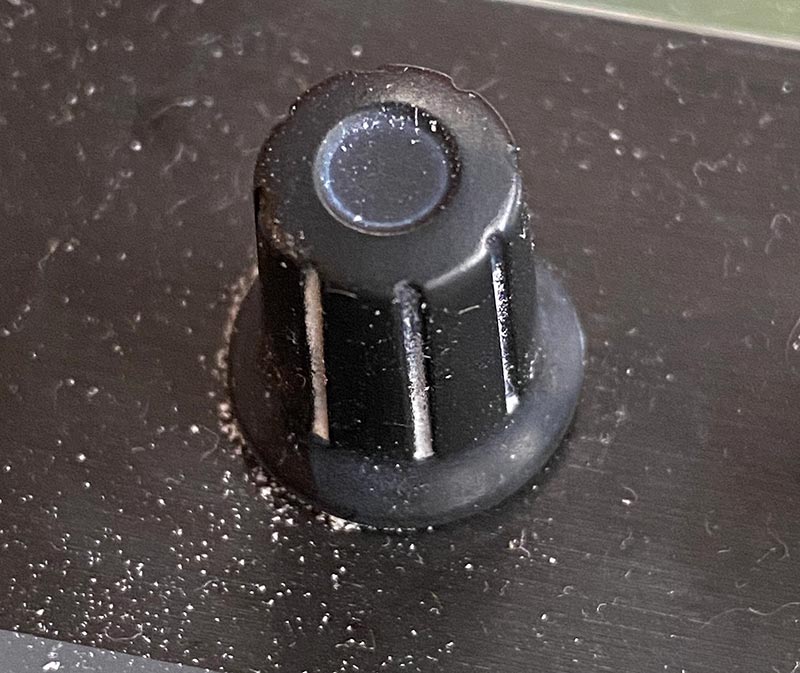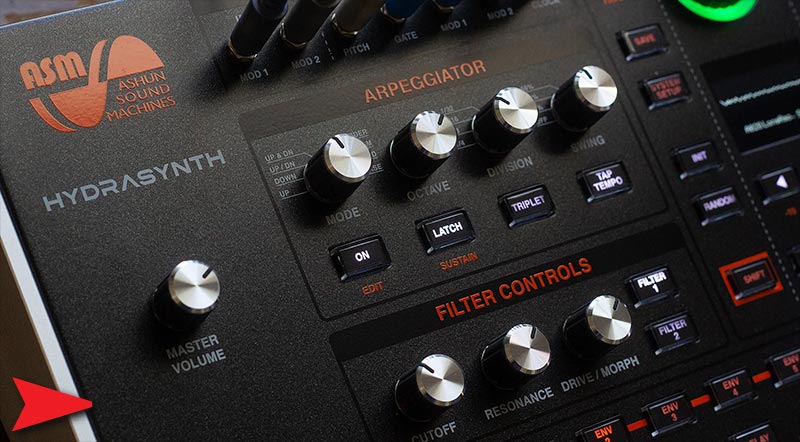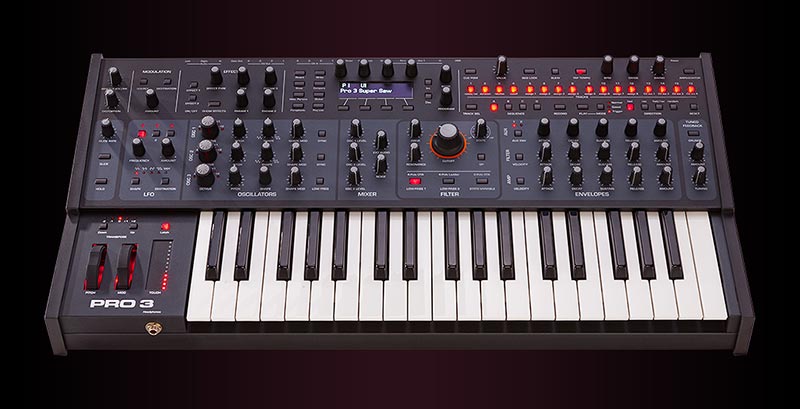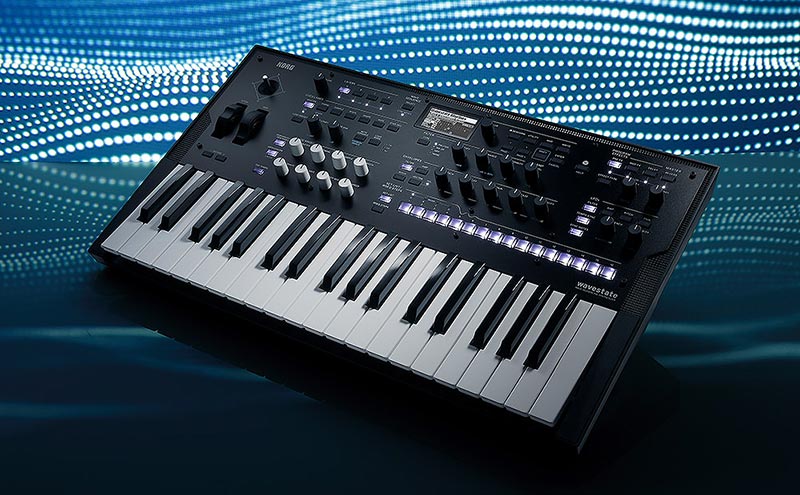By Greg Geller – Editor-In-Chief – FutureMusic
As the Editor-In-Chief of FutureMusic, I wanted to take a look back at 2020 and provide my observations on one helluva year. However, since twenty-twenty was so dramatic in so many different ways, I’ve tasked the rest of the team here at FutureMusic, even dragging our Editor-At-Large out of the woods for their impressions on the music industry, gear that made a difference and electronic music production.

For a limited time only! Up to 80% off all Waves Bundles. PLUS use Waves promo code “CK901” for an additional 10%! This is Waves best deal yet! Get yours today before this special ends! GO!
Moog Subharmonicon
2020 – A Year In Review
What stood out in 2020 that the media didn’t pick up on?
“For me, it was how the used gear market completely dried up,” noted our Advertising Director, Angelina Lynn Cruz. “Before Covid, there was always a ton of deals to be found and you could score a significant discount by buying used. Now, there are very few decent products available and the prices of quality bits are close to buying new. That said, I was able to buy a ASM HydraSynth desktop from someone who was dumping his studio at a significant discount to fund his move out of the City. There are still deals to come by, but it’s much, much harder.”
However, one of our writers became disillusioned by a certain online used gear marketplace. “I initially thought Reverb.com came to the market with a unique value proposition in order to take the risk out of buying used gear online, but when they started to charge sales tax on used gear, I vowed never to buy from them again,” stated Douglas Park. “This double-dip is essentially what the DMV does when you register a used car. I expect this from The Man, but not from a music store.”
Covid has been a boom to certain retailers such as Thomman, Sweetwater and even smaller companies such as Perfect Circuit, who all saw big upticks in 2020. Stock at many of these retailers for desirable gear became quite depleted between demand and delays in receiving overseas shipments. The reason being that with so many people stuck at home, electronic musicians and producers spent more time in their studios making music. “What I saw from my friends is that the money that usually went to dining out, bar hoping, concerts, clubbing and traveling went to buying gear,” revealed Angelina Lynn Cruz. “Even people who never picked up an instrument before or even considered DJing.”
Manufacturers also witnessed improvements to their bottom line. Moog Music, who spent the first part of the year producing PPE gear for the health industry, found that when their supply chain was reestablished, they were able to increase their sales 15% over 2019’s numbers.
What were some of the innovations that impressed you this year?
“I think Native Instruments got the short end of the stick with their all-in-one Maschine+ thanks to it debuting just before Covid decimated the live performance scene,” stated Dan Brotman, FutureMusic’s Editor-At-Large. “It’s a real shame, because touring DJs, electronic musicians and others who currently use the Maschine platform would have welcomed eliminating a laptop on stage.” At $1400, the highest price for a Maschine product yet, and one that will eventually become out-dated as technology forges ahead, its core market was live performers. However, Brotman feels that it still may find a niche in the studio, while live performers are sidelined. “As a standalone unit, the Maschine+ can certainly be the hub of a studio, as well as work along side a DAW freeing up precious computer resources.”
“I also think Aaron Higgins’ 1010Music should also be cited,” Brotman continues. “What I really like about their products is that they’re edgy and innovative, but also fill market needs. We have their BlueBox in for review and its very impressive. For users of the Roland Boutique series or the Korg Volca’s, it’s the glue users have been clamoring for to make it all just work. Add quality effects, recording, visual EQ and more, with the footprint the size of a Kit-Kat bar, and wow.”
“There are so many lit guitar pedals that have come out recently, which work wonderfully in the electronic music space,” noted Karen Wright, our Executive Producer. “My favorite, which I discovered in January, but I believe came out at the end of 2019, is Mood by Chase Bliss. If you’re into ambient or cinematic electronic music, you should definitely check them out.” Chase Bliss, founded by Joel Korte, also has a sad, but beautiful origin story, which makes everything they do even more meaningful. “Another [pedal] I should add is Rooms by Oliver Ackermann’s Death By Audio,” Wright continues. “Located around the corner from where I used to live in Queens, New York, Death By Audio has a distinctively DIY punk vibe, but their Rooms processor is one of the most beautiful reverbs you can imagine. Add it after the Mood pedal and it will remedy any bad day or sooth any jitters.”
Personally, I liked Moog’s Subharmonicon. It’s certainly not for everyone, but it’s a provocative analog synth that has a lot to offer – but only if you’re willing to invest time and effort to the cause. It’s very well made and can be used with Moog’s DFAM and Mother-32 to complete the trifecta, or as a standalone synth to creating evolving soundscapes. Pair it with your favorite effects, or Karen’s suggestions above, and it’s pretty much all you need to enter the wonderful — and wallet draining — world of Eurorack semimodular.

What are trends, products or features you’d like to see die?
For Dan Brotman, the choice was clear. “That’s a no brainer. Those rubber-coated exterior coatings that seem to be all the rage. They have a great tactile feel, but after a year or so they decompose and become horribly sticky. I have gear that has deteriorated to the point that I can’t it anymore because it’s turned into a goopy mess. Worse, is that the only solution I found is coating the surface with thick baking soda. It solves the sticky problem, but the gear now has baking soda residue all over. Lose—Lose. Manufacturers, please. Just. Stop.”
David Teller, a staff writer, was quick to point out “dodgy firmware” and “half-baked MIDI implementation.” He cited Behringer as the biggest offender, but also felt that the Moog Taurus firmware was “an embarrassment” for such a great brand.
“The Roland Boutique manuals should be included in the Torture Devices Hall Of Fame,” claimed Cruz. “It’s basically looking at microfilm on a foldout map. Just lunacy! Either have a proper manual like the TR-8S, or create a quality PDF for download.” Since Moog seems to keep popping up in our discussions, I would add that their manuals are phenomenal. Easy to read and understand, printed on high-quality paper. Great diagrams. The industry’s high-water-mark at the moment.

What do you think is the best synth for under $1000?
I’ll go first since I want to point out that there were a ton of wonderful offerings in 2020 for musicians looking to find new sonic inspiration from established brands and new companies. Modal, Moog, UDO, Behringer, Korg, Ashun Sound Machines, and others premiered solid products in this range. Why no mention of the above $1000 price point? I don’t think you need to spend that money to get great sound these days. Not that there aren’t truly wonderful synthesizers available for over a grand, but…
Now this is quite subjective, and I know I’m definitely going to get some blowback on this stance, but if you had $3500 to spend on new gear, should you buy a Prophet-5? Or…should you spend that money on a new synth, or two, or three, or four? Or maybe a couple of synths and some quality processing? Or one synth and a new laptop? In years past, you could certainly make the argument, since there was serious disparity between those price points, but today? However, Jimmy Jam and Terry Lewis made a compelling argument for over-spending.
At a NAMM show several years back, I bumped into Jimmy Jam and Terry Lewis, the famed producers. They were looking over some crazy expensive workstation – I think it was the Korg OASYS which was selling for $8000.00. I asked them what they thought was so appealing about this unit. I thought the first thing they were going to cite was the OASYS’ sound, but no, it was the price point. This took me back. “The price? Really? Why?” I don’t remember if it was Jimmy or Terry who presented me with this philosophy that day, but they were both in agreement. They countered that only a handful of musicians, keyboard players and producers would be able to afford the OASYS, ensuring that they would have a competitive advantage in terms of sound. After a year or two, they would sell it and buy into the next unaffordable synth. I found this fascinating, but learned later that this approach wasn’t unique to just Jimmy and Terry.

Thus, I put the $1000 synth question to our staffers with the caveat being they could name any synth they wanted. Ms. Cruz quickly chimed in that she loved the Korg WaveState. “It’s certainly much more accessible than its predecessor, but it can still be daunting proposition when getting your hands dirty with the programming. That said, it’s so enveloping. It’s like getting swallowed up in a big sonic bear hug.” Brotman put forth the ASM HydraSynth desktop again. “Putting the great sound aside for a moment, I just love how the developers approached synthesis on this box. It’s a different approach, but so intuitive that you never feel lost. I think other manufacturers would certainly benefit from taking a look at ASM’s methodology.” Teller threw out the Behringer TD-3, a Roland TB-303 clone and braced for impact during our Zoom call. Karen Wright called him out on the spot, but Teller countered, “for $150 bucks, it offers a ton of value and delivers on that acid sound.” Brotman, who happens to own the original 303, as well as several clones, backed him up, “I hate to say it, but I do agree with David. It doesn’t have the TB-303’s ‘grease‘ but for $150, it’s an easy sale. In fact, I bought one when they first went on sale and then another one when I saw it for $120 on Amazon last month.” However, he chuckled, “every time I use it, the marketer inside of me keeps yelling at the top of his lungs, why didn’t Roland just came out with a 303 mkII in the 90’s with MIDI implementation! The amount of money they would have made…but I digress.”

Indeed. But what was Ms. Wright’s choice? “Well, this certainly doesn’t fall in the sub $1000 bin, but I really liked what Axel Hartmann and George Hearn achieved with the [Udo] Super 6. I’m not sure this counts for 2020 since I don’t know anyone who actually was able to purchase one in the States, but it’s got some very cool features, no menu diving and a truly expansive sound thanks to its binaural stereo mode. Marry that to twelve-voices and it’s just massive. However, since it’s difficult to find outside of Europe, I think I’m going to go with either the Sequential Pro-3 or the Moog Subharmonicon. The Prophet is just brilliant sounding and the build quality is world class, but it’s £1,275. Still a great deal if you want that Dave Smith analog sound, plus the power of digital wavetable and effects in one unit. However, the Moog Subharmonicon satisfies your price requirement and packs quite a punch for £599. People complain about its four step sequencers, but I’m just amazed they squeezed all that lovely analog action in the small Mother Eurorack chassis.”

What are you most looking forward to in 2021?
“Getting out of my bloody flat!” Screamed Karen Wright. Angelina Cruz agreed, but added she missed the “communal dancing” at her favorite club. “I hate to admit this, but I was so desperate for the club experience that I tried one of those virtual events. I didn’t work for me – actually made me even more miserable. I don’t know when they’ll start opening clubs again, or even socially distant concerts, but I would look forward to anything at this point.”
“I’d want to see what Korg’s got cooking for 2021,” Brotman offered. “I would love to see a desktop version of the WaveState for under $500, as well as the often rumored ARP 2600 Mini.” Korg already has the form factor with the MS-20 mini, and there is certainly a passionate audience, but unfortunately nothing official has been announced. “I also would like to see what innovations come to light from people who have been working in their garages during the lockdown,” Brotman continued. “That’s what I was going to say!” Wright interjected. “I definitely want to see the Wild ’n’ Wonderful – in fact, the weirder the better!”
For me, I’m interested in how artificial intelligence will impact music technology in 2021, both computationally in processing and also in composition. There are many simultaneous developments happening in both spheres at the moment, but what will be the biggest disruptor?
Park took a step back from the music industry. “I know I’m going off topic, but I’m looking forward to the Covid vaccines being successful. I sincerely hope there are no negative side-effects or anything that could end up being a deterrent from wide-scale adoption. I just want to go back to how things were…” Something we can certainly all agree on. “In that vein, I would add that I’d like to see people actually listen to each other, even if they have a different viewpoint,” Cruz offered. “It’s the only way people can grow, and heal after such a tumultuous year.” Word.








